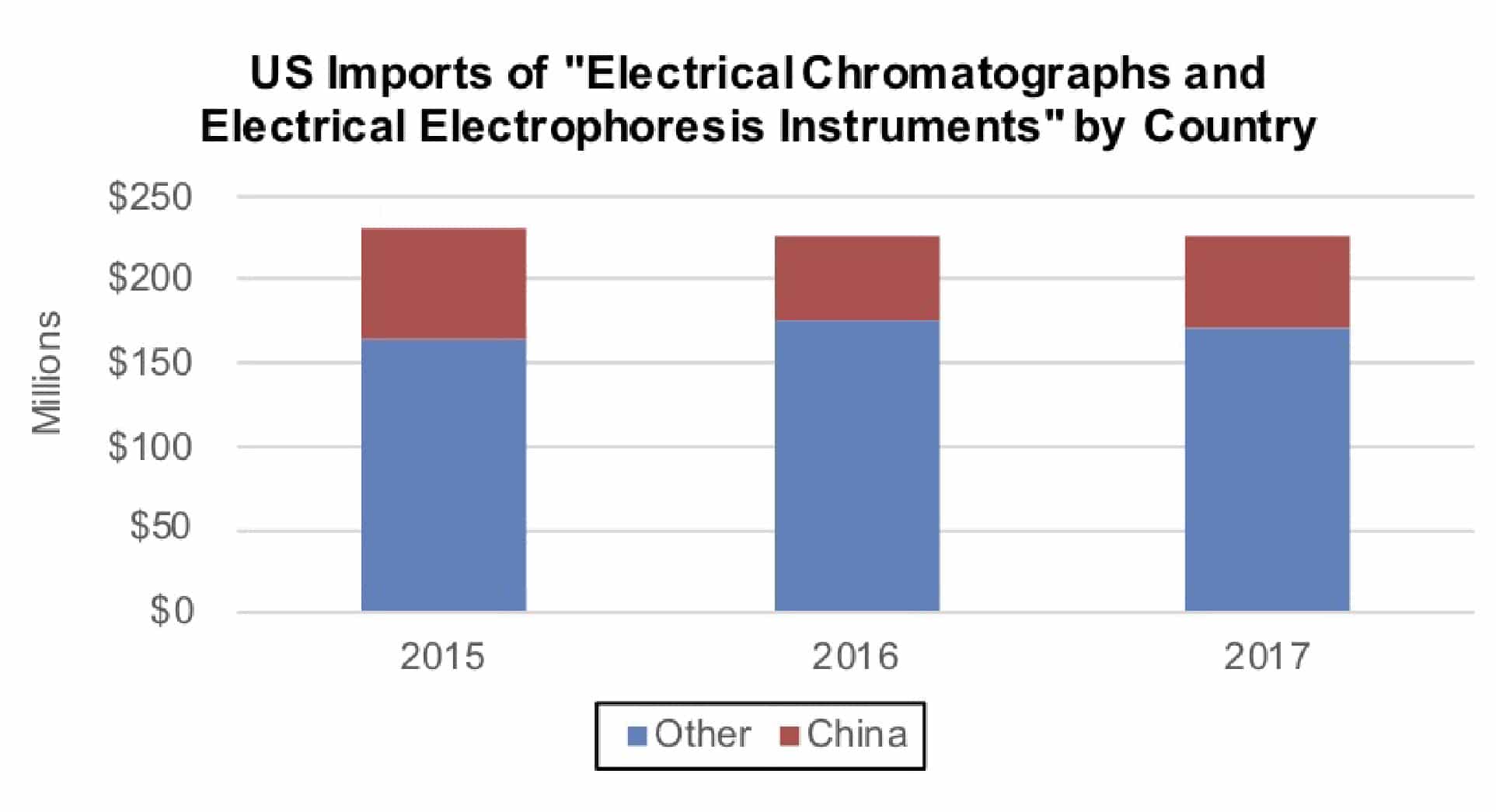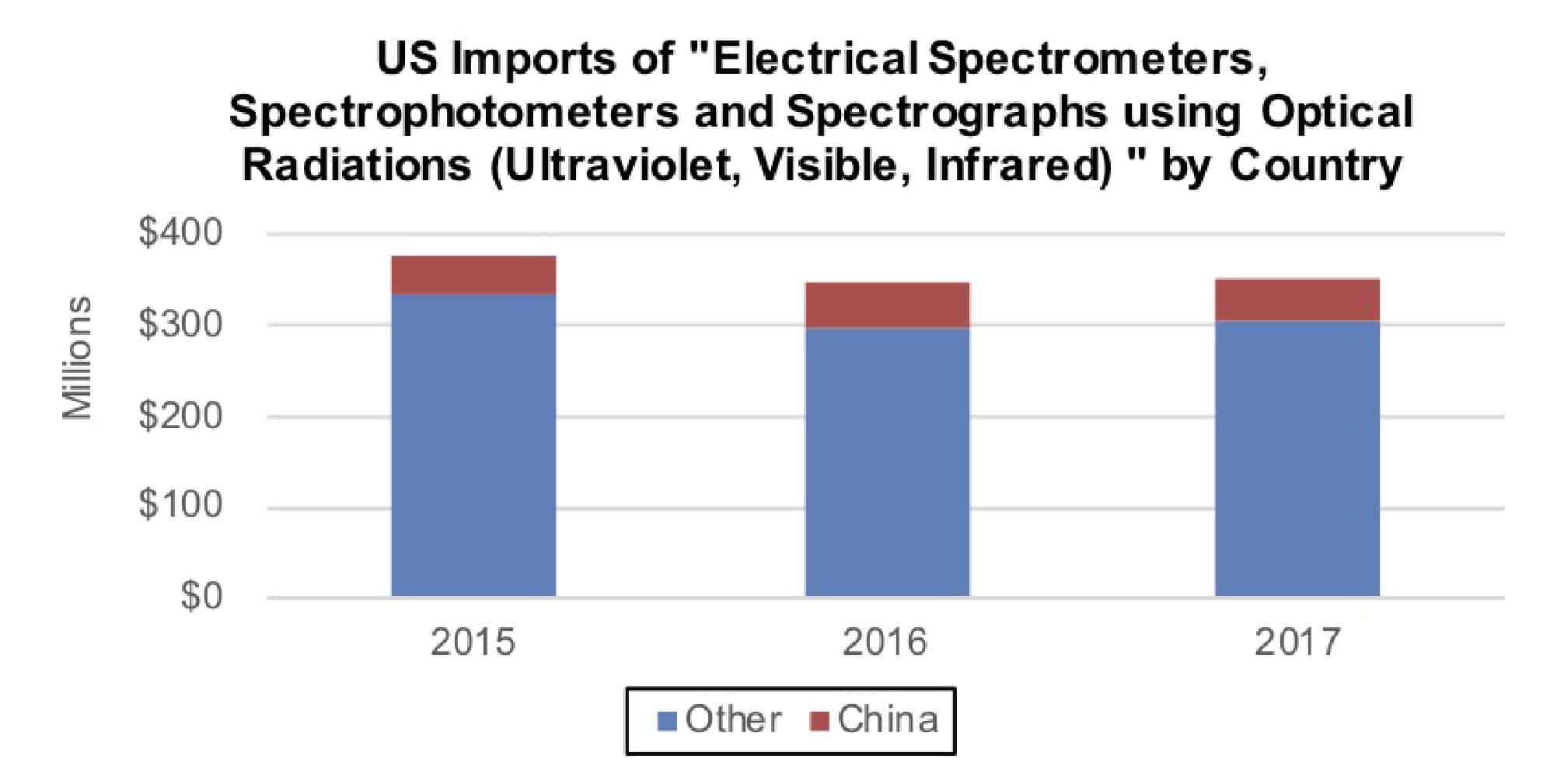Tariffs to Affect US Imports of Chromatographs and Spectrometers from China
US-China trade tensions have reached a boiling point, with US tariffs on an estimated $34 billion in Chinese exports scheduled to come into effect July 6. The action would impose 25% tariffs on 818 types of product imports from China into the US. China’s retaliatory tariffs, expected to start the same day, likewise would impose 25% tariffs on 545 categories of products valued at $34 billion, and primarily target food and automotive exports from the US.
Among the product categories on the list of US tariffs for Chinese products are some specific types of laboratory instruments. One category that the US has targeted is “electrical chromatographs and electrical electrophoresis instruments” (US International Trade Commission’s Harmonized Tariff Schedule code 90272050), as published in the Federal Register on June 20.
According to US International Trade Commission (USITC) data, in 2017, the US imported products from China in this category valued at $55.2 million, making China the source of 24% of such imports by value, and the second largest exporting country, just slightly behind Sweden. In 2017, US imports of “electrical chromatographs and electrical electrophoresis instruments” from China increased 6.0%. For January through April of this year, such imports from China were flat. In contrast, imports of these instruments from all other sources were up 18.7%.

A second category of laboratory instruments on the list is “electrical spectrometers, spectrophotometers and spectrographs using optical radiations (ultraviolet, visible, infrared)” (HTS code 90273040). The US imported $353.2 million of such products in 2017, with China accounting for 14% of imports, the second largest percentage behind Germany. Imports of “electrical spectrometers, spectrophotometers and spectrographs using optical radiations (ultraviolet, visible, infrared)” from China fell 6.4% in 2017. And in the first four months of this year, imports of such product from China plummeted 16.4%, but were up 40.6% overall for all countries.

As reported by The Scientist on June 27 and Nature on June 22, the impact of the tariffs on US laboratories remains to be seen and is unlikely to be immediate. However, each country’s threats of tariffs on additional products may inflict greater disruption. Under consideration by the US is the next set of Chinese tariffs on 284 products, worth an estimated $16 billion. This list includes some components and parts used in laboratory equipment, such as motors.
China’s proposed list of 114 products additional products includes laboratory reagents and chemicals, specifically “diagnostic or experimental reagents attached to the backing.”





